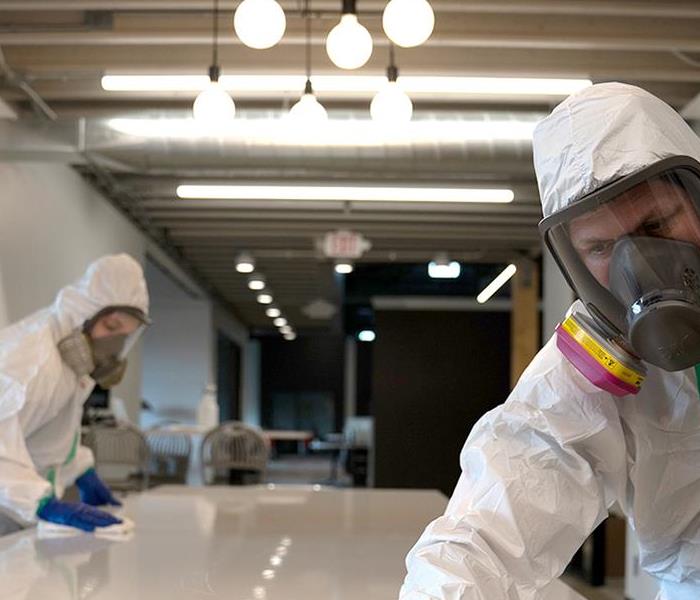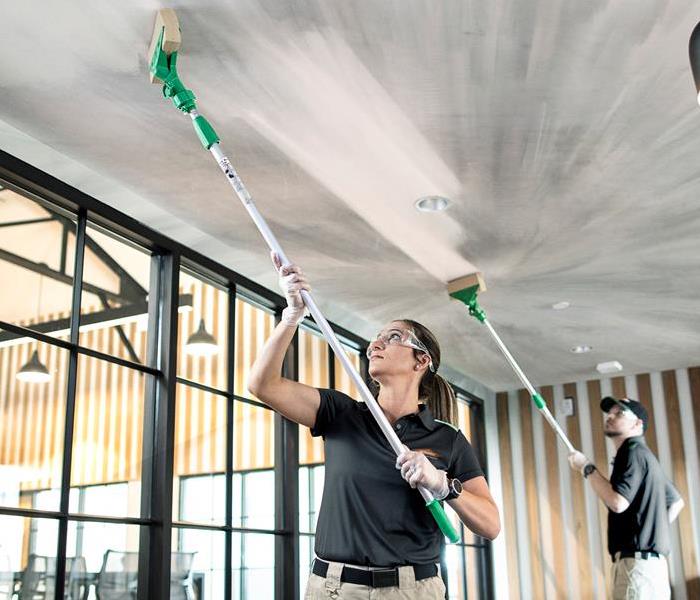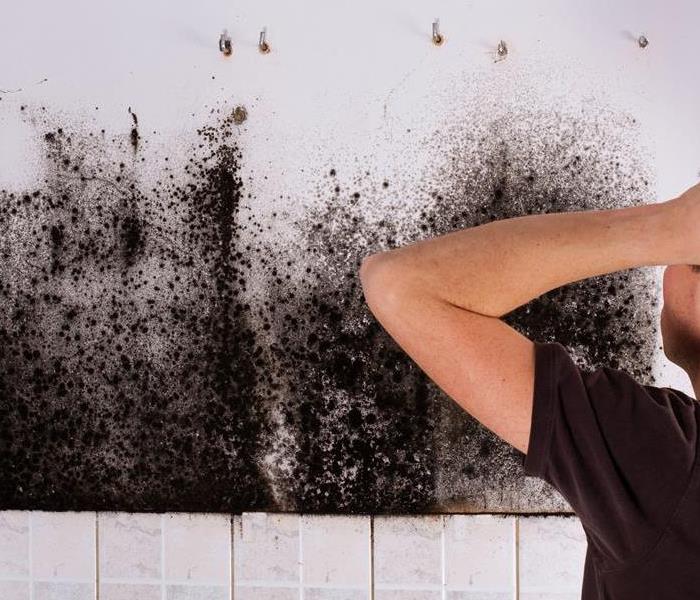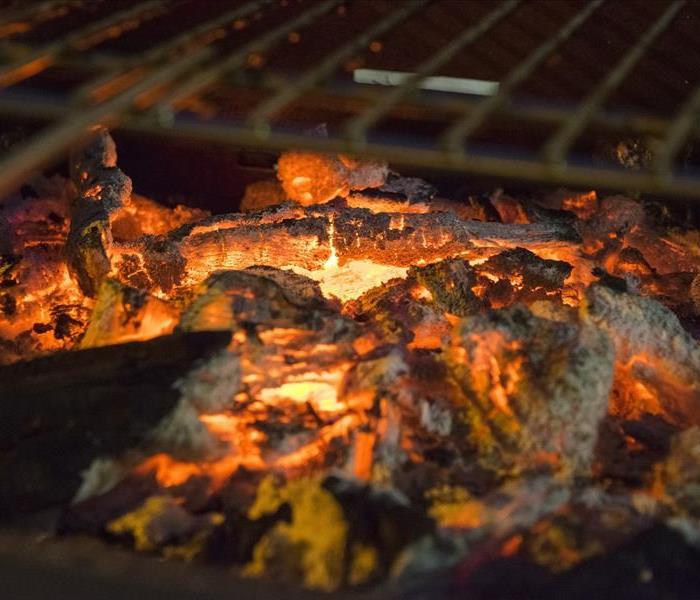Recent Blog Posts
What is Water Mitigation?
6/17/2024 (Permalink)
If you clicked on this blog, it is likely because you are seeking water mitigation services but need a better understanding of what it exactly is? Water mitigation is the process of reducing or preventing the damage caused by water after a leak, burst pipe, or flood.
The primary goal of water mitigation is to minimize the impact of water damage and prevent secondary issues such as mold growth. SERVPRO® specializes in water mitigation and uses advanced equipment to clean up water from your home or business.
SERVPRO follows significant steps for water mitigation. After we arrive and perform the initial assessment, our technicians:
- Remove Water and Dry It Out – using wet/dry vacuums, dehumidifiers, industrial fans, and other tools; we begin extracting water and increasing airflow to achieve optimum drying conditions.
- Thoroughly Inspect Damage – We look at any areas impacted by water, determining what can be restored and what must be replaced. This may involve inspection of flooring, wall cavities, belongings, electrical outlets, and more.
- Disinfection – After your home is free of water and drying wraps up, we thoroughly clean and disinfect all surfaces affected by water. Our Green Fleet comes stocked with a full selection of EPA-registered cleaning agents.
No stone must get left unturned when it comes to water mitigation, regardless of the event that caused the emergency. We feature highly-trained and certified technicians that know how to adapt to each situation to ensure the best results.
Our 24-hour emergency restoration services are here whenever you need them, which is the perfect way to restore your interior to pre preloss condition “Like it never even happened.”
What to do if you have mold and how to fix it
6/17/2024 (Permalink)
There are many hazards that a small business owner or landlord has to take into account when maintaining their buildings and places of work. One of these hazards is mold and the smelly mycotoxin that always accompanies it. When allowed to go unchecked, this hazard can potentially ruin the hard work that has gone into a building or grind the business conducted within to a halt. To help prevent this, here are a few steps for renters and maintenance workers on how to recognize and fix mold growth.
1. Use Your Eyes
Mold can easily be mistaken for dirt or dust if not thoroughly inspected. Depending on what fungus present, the mold could take on a variety of different shades and textures. However, mold may not have a visual presence.
2. Use Your Nose
Spores often incubate where small hidden leaks show up or where condensation builds as a result of a possibly broken air condition unit or something similar. When this happens, investigators can rely on their noses. Mold growth is often revealed by a variation of a musty odor.
However, it's important to take note of any new smells. This is due to the scent of mold changing based on the spore count and where it is in its life cycle. After all, the smell is formed by the mycotoxin released by mold eating and multiplying.
3. Fix the Problem
Once the mold has been found, whether it’s out in the open or recently excavated, it’s important to immediately focus on mold remediation. This is because mold spreads quickly, often manifesting within 48–72 hours. If it looks like the mold is relatively contained and has only covered a small surface area, it is possible to get it cleaned up. In this case, cleaners should use the proper equipment and maintain safety standards during the process.
When maintaining a building, it’s good to be perceptive. If the mold has spread, remember that it’s important to call in a professional cleaning service. Safety should always be a priority when dealing with mold and its mycotoxin.
The 3 Signs of Mold
5/14/2024 (Permalink)
Mold is a type of fungus that develops from tiny spores that float around in the air, both indoors and outdoors. Mold is often found in humid or moist places, and if allowed to grow unchecked, it can present issues for a building. With that in mind, we offer this quick list to help you tell when mold is growing in your building:
1) Musty Odor
Even if you cannot see mold, it can be in your home or business. A very common indicator of the fungus is its smell. When mold grows in an area of your building, you will notice a pungent and musty smell. Take action immediately when you notice the odor. Mold overgrowth can cost you a great deal of money and even your health. You may not be aware of the full extent of the problem until professionals check in between walls and under floors.
2) The Appearance of Mold
Mold may look like cotton, granules, or leather. It can appear in various colors like white, green, gray, black, brown, or yellow. Unfortunately, many people ignore small mold and mistake it for soot or ordinary dirt. Take immediate action when you see tiny discolored and fuzzy growth on furnishings or the surface of building materials.
3) Water Leaks
If you notice water leaks from ceiling pipes, water stains, or standing water, mold might become an issue. Water leaks cause moisture, and that provides an excellent growing place for mold. Check for discoloration or watermarks on carpets, walls, and other materials for hidden mold.
Any business or home can face a fungus fiasco. If you suspect that you have a mold problem, SERVPRO® can inspect the property. Mold remediation is one of our specialties and we can eliminate the issue safely. We also invest in state-of-the-art equipment and continuous training that ensures your home or business is quickly and efficiently restored.
Give us a call today!
What Cause Home Fires? Unclean Grills
5/8/2024 (Permalink)
Nothing says summer in Nashville, TN like the smell of your favorite foods on the grill. When the temperatures climb, it may feel easier to take dinner prep outdoors rather than sweat over a hot stove. However, it's important to clean your grill every time you use it. Not only does this prolong the life of the appliance, but it protects your home from fires as well.
In a survey between 2014-2018, over 10,600 home fires were linked to grills and barbecues. A buildup of oil and grease makes your grill more susceptible to putting up large flames that can catch onto porches, roofs, and dry grass. Proper grill maintenance is essential for keeping your favorite summer activity safe.
- Clean the Grates
Proper grill cleaning after every meal makes maintenance much easier. For either a gas or charcoal grill, scrub the grates while they're still hot and before the food particles stick too badly.
Some people like wire brushes, though balled-up aluminum foil also works and won't leave little bristles behind.
- Check for Grease or Ashes
Avoiding grease fires is a top priority with gas grills. Before you turn on the grill, check the grease tray. If it gets overfilled, you'll be cleaning grease spots off your patio.
Similarly, always dispose of all completely cooled ashes from your charcoal barbecue.
- Deep Clean Annually
When the grilling season ends, deep grill cleaning saves your grill and prevents problems next season. Kicking off the season the next year with a fire due to an improperly maintained grill can put a major damper on your next barbecue. - Know Grease Fire Safety
Educate yourself on how to extinguish a fire in your grill. Never use water, as water can actually make a grease fire worse. Closing the lid is a good first step because it stops oxygen flow to the flames.
If you do have a home fire, a local fire restoration company can help with repairs.
Enjoy the grilling season to the fullest by practicing good grill cleaning habits to protect your home and your dinner.




 24/7 Emergency Service
24/7 Emergency Service



